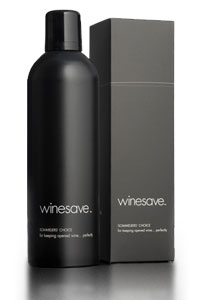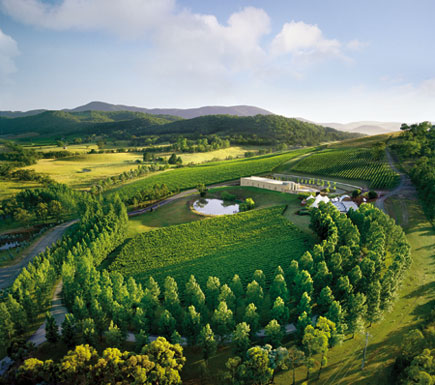Throughout 6500 years of winemaking evolution, the constant issue of keeping wine from deteriorating and bacterial spoilage has been a conundrum. Ironically the solution to this quandary was always, literally, right under our noses.
Over thousands of centuries there are landmark discoveries and inventions that have been instrumental in changing the way wine has been made, stored, transported, traded and most significantly, consumed.
In retrospect some of these innovations seem elementary however, some involved thousands of years of perfecting and relative to the times, were cutting edge developments and technologic milestones.
From the discovery of sulphur dioxide by the ancient Romans to the growing acceptance today of the screwtop closure, throughout this fascinating evolution of winemaking technology, wines main enemy has been air, or more specifically exposure to oxygen, and subsequently spoilage by premature oxidization.
The fundamental comprehension of minimising the exposure of oxygen emanated with the genesis of wine and the discovery of pressing grapes to gain more wine of better quality. Originating over 6500 years ago, modulated and permeating throughout the Mediterranean and continuously evolving over hundreds of centuries, the ancient Roman agriculturist, Columella, would marvel at pneumatic membrane wine presses we have today.
The amphora used by the ancient Greeks and Romans revolutionized the storage and transportation of wine, superseding wooden or skin containers and facilitating the trading of wine, along with olives, olive oil and grains. The amphora prevailed for millennia until the realization of the wine barrel revolutionized the passage of wine at a time when global civilization was fast-evolving.
The first dedicated glass wine bottle appeared in the 1630s profoundly influencing the matrix of wine, facilitating extended ageing at the same time greatly reducing oxidization and its dark color protecting wine from harmful light.
By 1660 the phenomenal attributes of cork in its impermeability and compressibility were understood and with English technical innovation in glass manufacturing leading to more tapered bottles that could be laid on its side, keeping the cork moist and relatively airtight.
Even the once indispensible cork is now superseded if not destined to be obsolete with the fast-growing acceptance of the screwtop closure. And with the very nature of wine appreciably less intimidating nowadays and a growing familiarity amongst the populace, a glass of wine is increasingly becoming a part of everyday life around the world.
Today’s more self-assured, open-minded wine consumer has a considerably larger vinous world to explore with a myriad of regions, varieties and styles.
As any wine marketer will acknowledge, wine consumers are at their most inquisitive and adventurous in a restaurant environment or wine bar and willing to try something new, most likely served by the glass.
Indeed, serving wine by the glass or even tasting portions is universally transforming wine service and consumption patterns giving the consumer a greater choice of wines to discover moreover, promoting the pairing of wines to specific dishes and enhancing the homogeneous synergies of enjoying wine with food.
Imagine if you could take this same approach at home and depending on your mood or what you were eating, you could choose from a range of wines by the glass. Or even the very notion that you can open up a bottle wine anytime and not feel compelled to drink it all.
Obviously this would normally pose a problem with the opened bottles going off, as wines main enemy is air; more specifically exposure to oxygen and subsequently spoilage by premature oxidization.
This is where restaurants, wine bars and hotels have had the distinct advantage over the home consumer in rationalizing thousands of dollars for commercial wine preservation systems such as the high-tech Enomatic www.enomatic.co.nz which utilizes the indispensible inert noble gas argon; being colorless, odorless and flavorless, protects the wines essential qualities for more than 3 weeks.
That said, many restaurants and wine bars struggle to justify this expense and the reality is there is a lot of poorly kept, substandard wine being served by the glass.
 However, the solution to this 6500 year conundrum is now solved with an innovative Australian company, winesave www.winesave.com, introducing ground-breaking technology that successfully dispenses food-grade argon in an effective and affordable canister.
However, the solution to this 6500 year conundrum is now solved with an innovative Australian company, winesave www.winesave.com, introducing ground-breaking technology that successfully dispenses food-grade argon in an effective and affordable canister.
No doubt there will be some consumer skepticism with the very mention of ‘gas’ however, argon has been used in wineries and food production for many years and yes, the irony is it comes from the very air we breathe and has always existed in the earth’s atmosphere.
Argon makes up 1% of the air that surrounds our planet, nitrogen being 78%, oxygen 21% and the balance carbon dioxide, hydrogen, neon, helium, methane, krypton, xenon and ozone, with the argon obtained by modern methods of liquefaction of gases and fractional distillation.
Thus it is a completely natural product and environmentally friendly, with the can and its components all recyclable and the argon returning to the atmosphere, where it came from!
Argons most exceptional quality is it combines with nothing; an atom that is totally resistant to bonding with other elements and being two and half times heavier than air, simply falls down displacing the harmful oxygen, forming an impenetrable layer between the wine and air.
Winesave is incredibly easy to use. A one second squirt inside the opened bottle of wine, with the bottle kept upright and relatively cool, the barrier of argon will preserve wine perfectly for many weeks, indeed months.
I have personally trialed winesave for several months on a wide range of grape varieties, styles and bottle age; from young and relatively fragile aromatic white wines to completely mature vintages of red wines, even a 1977 Vintage Port.
The results were conclusive if not astounding with not one wine showing any sign of deterioration. Even after opening and resealing several times, all kept perfectly for over 2 months, and some improved!
All technology has its evolutionary process and competing products and applications. In the area of wine preservation there has been a multitude of devices touted over the years, with limited success and inadequacies leading to consumer indifference.
The most commercially popular alternative to displacing harmful oxygen without using an inert gas has been inducing a vacuum, or extracting the air by a hand pump pioneered by Vacu Vin www.vacuvin.com. At its inception in 1986, it was unquestionably revolutionary and now boasts a consumer base of “30 million households in more than 75 countries throughout the world.”
There is however industry consensus that such hand pump operated systems do not accurately measure the vacuum pressure and arguably detrimental to the point of stripping the wine of aroma and flavor, and certainly questionable in a commercial application.
That said one of the front runners of the vacuum method, Le Verre de Vin www.pouringforprofits.com has developed technology “precisely measuring the vacuum needed to provide maximum preservation whilst at the same time retaining the flavours within the wine.” However, putting this in to perspective, it is a commercial application running into several thousand pounds sterling.
There is also another new Australian innovation (seems to be an obsession down-under) called Wine Shield www.winepreserva.com, a plastic disc inserted in the bottle that floats on the surface creating a barrier between the wine and the air space claiming to “Significantly slow oxidation”, “… keeping wine fresh for up to 5 days.” At face value, an affordable and practical application although conjectural and clearly has its limitations.
Appreciating that there is palpable consumer disconnect with wine technology – the simplicity, affordability, the natural qualities of argon and winesave technology are hard to ignore, and is a watershed development that will revolutionize wine consumption at home, and anywhere wine is served – by the glass.
Winesave is a wine preservation system that really works and whilst perfect for home use its greatest potential may well be in its practicality and affordability for restaurants, wine bars, hotels, wine retailers and cellar door tasting rooms.
How to use WINESAVE
Winesave suggest there are 50 applications to a canister, which is a conservative estimate by my reckoning, achieving another 30 or so myself. As in indication of price, a canister retails for A$28 in Australia and S$35 in Singapore.
For more information and stockiest worldwide, visit www.winesave.com
Enquires, both trade and consumer, in Cambodia, Hong Kong, Indonesia, Japan, Korea, Laos, Malaysia, Myanmar, Philippines, Singapore, Taiwan, Thailand and Vietnam can be directed to R&W International (Asia) Pte Ltd
Tel: +65362052 | Email: info@redandwhite.net
|
|
Tweet |






One comment to A Watershed Development for the Wine Consumer & Wine World | Comments Feed
Great work keep it coming
The comments are closed.